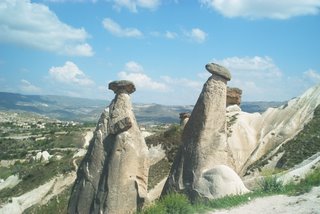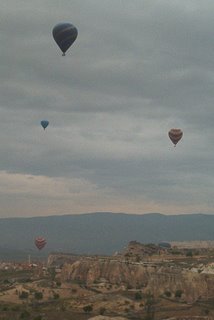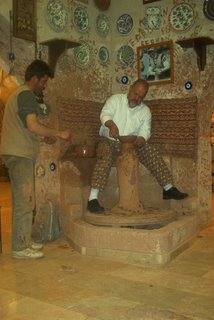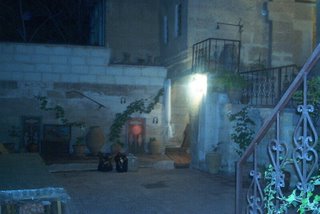 I was back on familiar roads yesterday, rain-soaked as they are, listening to All Things Considered as I drove to the grocery store and tried to figure out how to integrate where I have been the past three weeks and where I live. I had just pulled into a parking place when Meillsa Block said Stanley Kunitz died. He was one hundred years old. I paused to listen to what words they had to say about this wonderful poet.
I was back on familiar roads yesterday, rain-soaked as they are, listening to All Things Considered as I drove to the grocery store and tried to figure out how to integrate where I have been the past three weeks and where I live. I had just pulled into a parking place when Meillsa Block said Stanley Kunitz died. He was one hundred years old. I paused to listen to what words they had to say about this wonderful poet.
Stanley Kunitz was born in Worcester, Massachusetts and lived, in his later years, splitting time between New York and Provincetown. He was twice the Poet Laureate of the United States. I got to see and hear him at the Dodge Poetry Festival several years ago. He was a man of both strong and gentle spirit who grew in hope as he aged, rather than in bitterness or cynicism. When he wrote about poetry he said,
“The poem comes in the form of a blessing—‘like rapture breaking on the mind,’ as I tried to phrase it in my youth. Through the years I have found this gift of poetry to be life-sustaining, life-enhancing, and absolutely unpredictable. Does one live, therefore, for the sake of poetry? No, the reverse is true: poetry is for the sake of the life.”
At the end of the NPR piece, they played a tape of him reading a portion of his poem, “The Layers,” which I had forgotten, but will not do so again.
The Layers
I have walked through many lives,
some of them my own,
and I am not who I was,
though some principle of being
abides, from which I struggle
not to stray.
When I look behind,
as I am compelled to look
before I can gather strength
to proceed on my journey,
I see the milestones dwindling
toward the horizon
and the slow fires trailing
from the abandoned camp-sites,
over which scavenger angels
wheel on heavy wings.
Oh, I have made myself a tribe
out of my true affections,
and my tribe is scattered!
How shall the heart be reconciled
to its feast of losses?
In a rising wind
the manic dust of my friends,
those who fell along the way,
bitterly stings my face.
Yet I turn, I turn,
exulting somewhat,
with my will intact to go
wherever I need to go,
and every stone on the road
precious to me.
In my darkest night,
when the moon was covered
and I roamed through wreckage,
a nimbus-clouded voice
directed me:
“Live in the layers,
not on the litter.”
Though I lack the art
to decipher it,
no doubt the next chapter
in my book of transformations
is already written.
I am not done with my changes.
“Live in the layers, not on the litter.” He could have written only that one sentence and called himself a poet.
One afternoon on our trip, Ginger and I were having coffee (or tea) and trying to being to take at least some of what we had seen and heard. Though I had never been in either Greece or Turkey before, I had a strange sense of familiarity, even a sense of belonging that resonated with my youth growing up in Africa. I loved the variety around me, the layers of culture and history, the possibility of discovery, the feeling of connectedness with the world beyond America.
When I was in high school or college, I never imagined I would live my whole adult life in the United States. Now, just a few months away from turning fifty, I’m faced with having done exactly that. Life rolled out differently than I thought. I am an American who speaks only English, lives in a predominantly white suburb and works in a very white church. I struggle with feeling comfortable as an American. I want to be a citizen of the world first. But that is only one layer of life. One of the most meaningful books I have read over the past couple of years is Marcus Borg’s The Heart of Christianity, in which he makes a wonderful case of what he calls the “emerging paradigm” in the North American church, which he sees as growing and living alongside of the “earlier paradigm” or more traditional expression of faith, which is where I grew up. I am fed now by the more progressive side of faith and the inclusive expression of the love of Christ that struggles to find a foothold once you move outside of Western Christianity. All of that to say, as hard as it is for me to be an American, I am an American Christian.
“Oh, I have made myself a tribe out of my true affections, and my tribe is scattered!”
Part of my sense of discomfort I packed before we left for the Mediterranean. These are days when I can feel the plates shifting beneath me. I have had a sense for awhile that change was on the wind; I have not yet been able to discern what that change is, or what life will look like in the days to come. I find great hope in a man literally twice my age who could still read these words with hope and conviction:
Though I lack the art
to decipher it,
no doubt the next chapter
in my book of transformations
is already written.
I am not done with my changes.
If faith means anything, it means we have the courage to navigate the changes and to look for ways to grow. It means we are open to being changed, to being made new. The most touted of Paul’s conversions happened on the road to Damascus, but his letters are filled with the important and incremental growth that comes from learning to live in the context of relationships, of learning how to live both as a family member and a world citizen.
At the end of Act 1 in Thornton Wilder’s play, Our Town, Rebecca and George are talking:
“I never told you about the letter Jane Crofut got from her minister when she was sick,” Rebecca said. “He wrote a letter and on the envelope the address was like this: It said: Jane Crofut; The Crofut Farm; Grover’s Corners; Sutton County; New Hampshire; United States of America.”
“What’s funny about that?” George asked.
“But listen, it’s not finished: the United States of America; Continent of North America; Western Hemisphere; the Earth; the Solar System; the Universe; the Mind of God – that’s what was on the envelope.”
“What do you know!!” George said.
“And the postman delivered it just the same.”
My address is as specific as a street name and as expansive as the night sky. The layers of life stack up like a sumptuous feast, calling us to both nourish ourselves and share the bounty. Today, I’m called once more to remember to live in the layers.
I’m not done with my changes.
Peace,
Milton
PS — Speaking of layers, here’s the first of many recipes from our journey.
 I had not planned to write tonight, but everyone has gone to sleep — except for Scott who has gone to the all night graduation party — and I’m not yet sleepy. Two days in the house with family has left enough stuff swirling around in my head to keep my from sleeping for awhile. I figured, therefore, I might as well get some of it out here and maybe I could catch a couple of hours of sleep before dawn.
I had not planned to write tonight, but everyone has gone to sleep — except for Scott who has gone to the all night graduation party — and I’m not yet sleepy. Two days in the house with family has left enough stuff swirling around in my head to keep my from sleeping for awhile. I figured, therefore, I might as well get some of it out here and maybe I could catch a couple of hours of sleep before dawn.

























